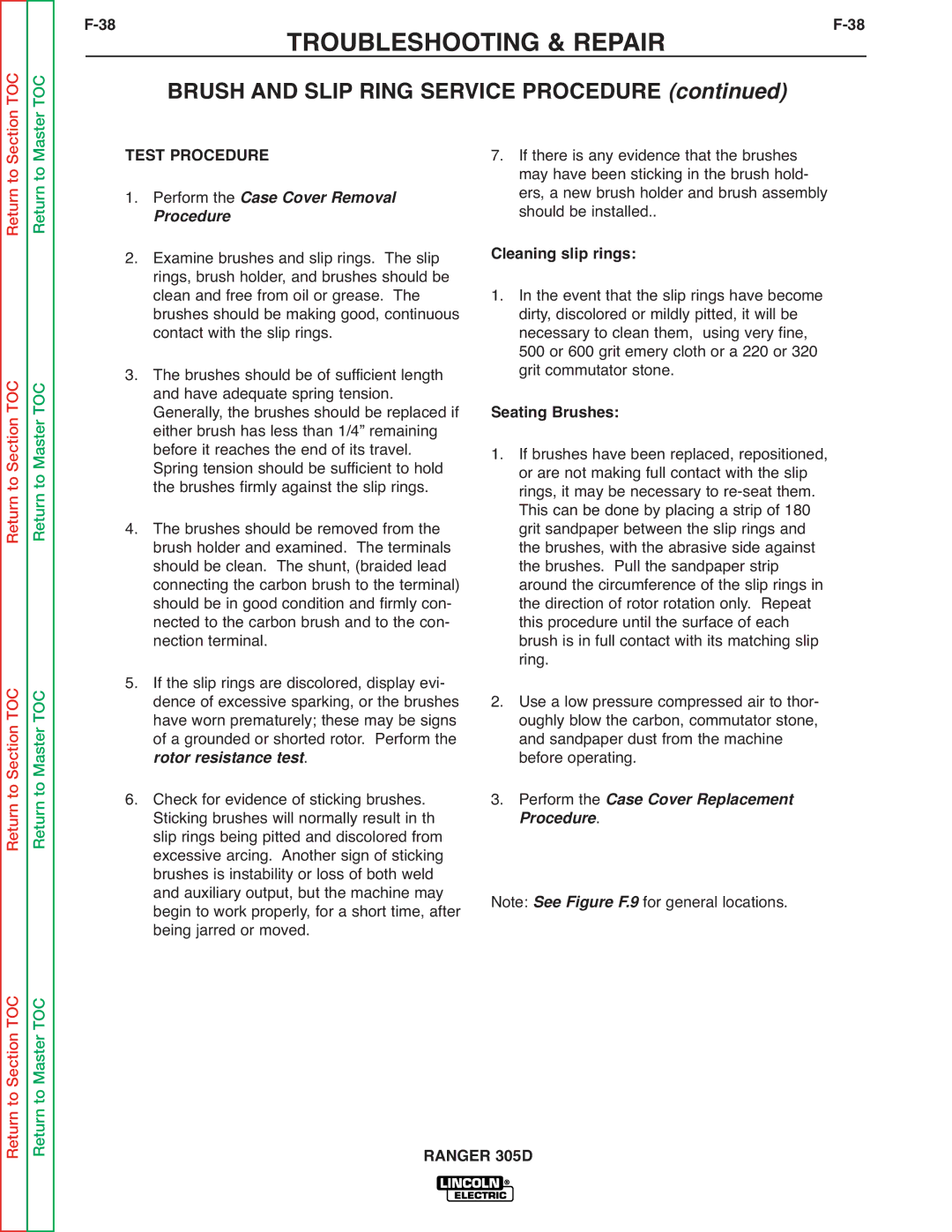
TOC
TOC
TROUBLESHOOTING & REPAIR | |||
|
| BRUSH AND SLIP RING SERVICE PROCEDURE (continued) |
|
Return to Section
Return to Section TOC
Return to Section TOC
Return to Master
Return to Master TOC
Return to Master TOC
TEST PROCEDURE
1.Perform the Case Cover Removal
Procedure
2.Examine brushes and slip rings. The slip rings, brush holder, and brushes should be clean and free from oil or grease. The brushes should be making good, continuous contact with the slip rings.
3.The brushes should be of sufficient length and have adequate spring tension. Generally, the brushes should be replaced if either brush has less than 1/4” remaining before it reaches the end of its travel. Spring tension should be sufficient to hold the brushes firmly against the slip rings.
4.The brushes should be removed from the brush holder and examined. The terminals should be clean. The shunt, (braided lead connecting the carbon brush to the terminal) should be in good condition and firmly con- nected to the carbon brush and to the con- nection terminal.
5.If the slip rings are discolored, display evi- dence of excessive sparking, or the brushes have worn prematurely; these may be signs of a grounded or shorted rotor. Perform the rotor resistance test.
6.Check for evidence of sticking brushes. Sticking brushes will normally result in th slip rings being pitted and discolored from excessive arcing. Another sign of sticking brushes is instability or loss of both weld and auxiliary output, but the machine may begin to work properly, for a short time, after being jarred or moved.
7.If there is any evidence that the brushes may have been sticking in the brush hold- ers, a new brush holder and brush assembly should be installed..
Cleaning slip rings:
1.In the event that the slip rings have become dirty, discolored or mildly pitted, it will be necessary to clean them, using very fine, 500 or 600 grit emery cloth or a 220 or 320 grit commutator stone.
Seating Brushes:
1. If brushes have been replaced, repositioned, or are not making full contact with the slip rings, it may be necessary to
2. Use a low pressure compressed air to thor- oughly blow the carbon, commutator stone, and sandpaper dust from the machine before operating.
3. Perform the
. Case Cover Replacement
Procedure
Note: See Figure F.9 for general locations.
Return to Section TOC
Return to Master TOC
